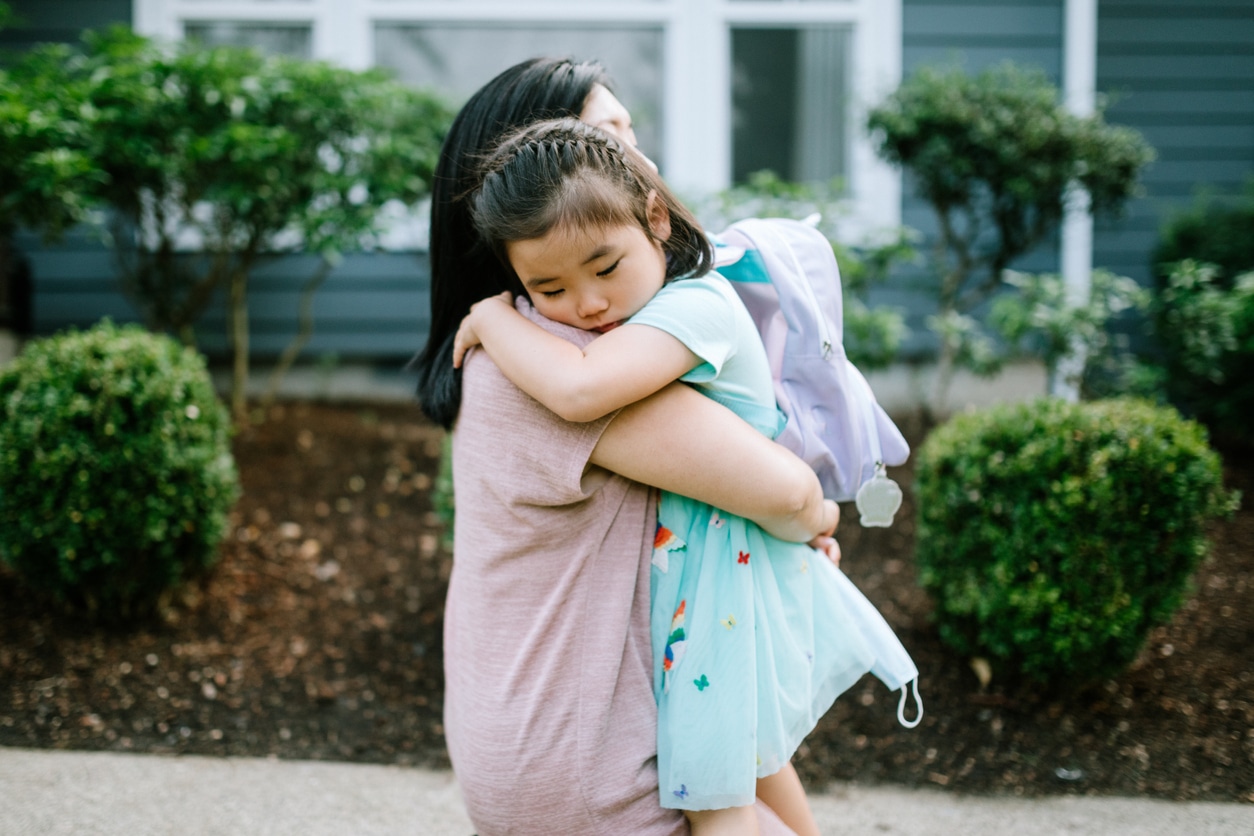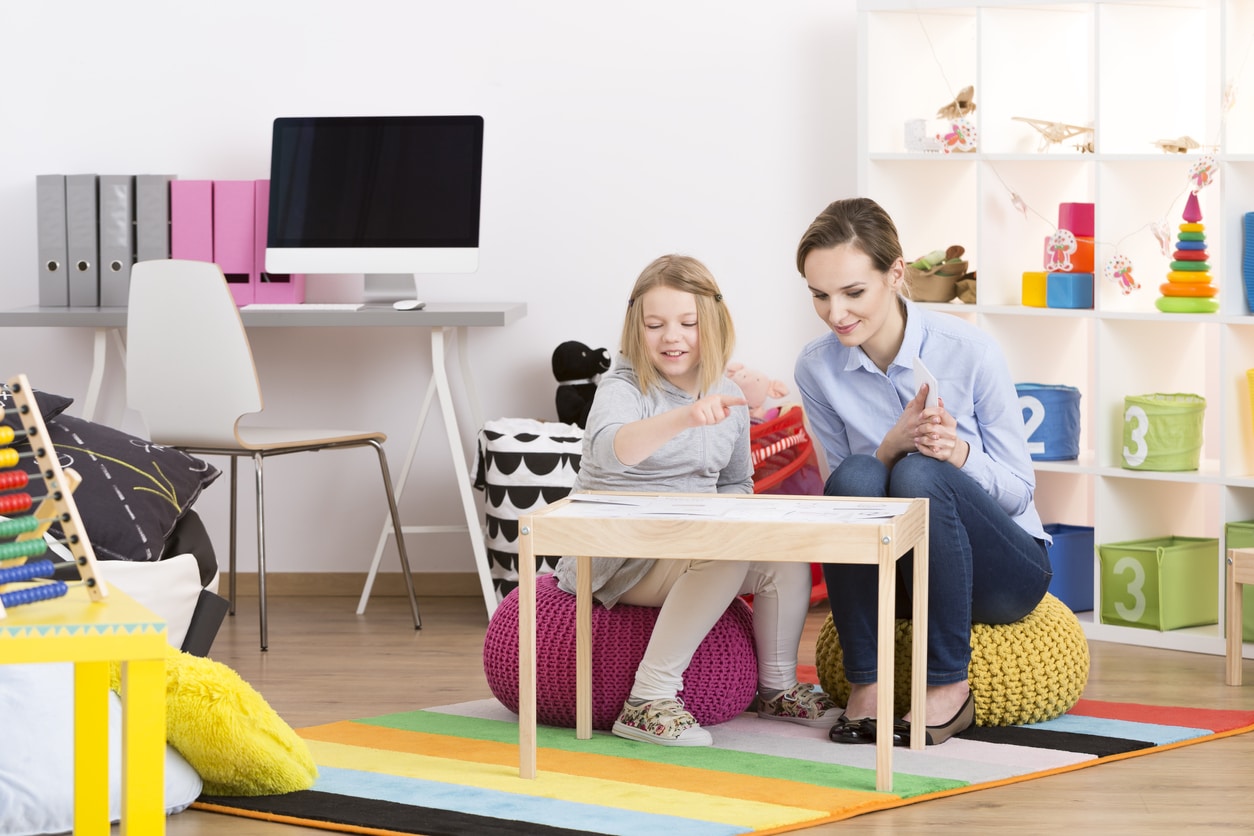Childhood Anxiety
Childhood is often seen as a time of innocence and carefree living. However, for many children, it can also be a period of silent battles. Childhood anxiety comes in various forms, manifests differently in children, and creates an impact into adulthood. Fortunately, pediatric therapy addresses and alleviates anxiety disorders in children, particularly through occupational therapy, physical therapy, and speech therapy.
Get Treatment Now

What is Anxiety Disorder in a Child?
Anxiety disorder in children is a complex, multifaceted condition that involves excessive and often irrational worry, fear, or nervousness. It goes beyond the typical worries that children experience as a natural part of their development. This condition can interfere with a child’s daily life, their ability to socialize, and their academic performance.
Types of Anxiety in Children
Anxiety disorders in children can manifest in several ways, with the following being some of the most common types, including:
- Generalized Anxiety Disorder (GAD): Children with GAD experience chronic and excessive worry about various aspects of their lives, from school to family, health, and future events.
- Social Anxiety Disorder: This type of anxiety involves intense fear or avoidance of social situations. Affected children may fear judgment or criticism from peers, leading to isolation.
- Separation Anxiety Disorder: Children with separation anxiety have an overwhelming fear of being apart from their primary caregivers, even for short periods. This can manifest as clinginess and reluctance to attend school or daycare.
- Specific Phobias: Children may develop irrational fears of specific objects or situations, such as animals, heights, or the dark. These phobias can cause extreme distress.
- Obsessive-Compulsive Disorder (OCD): OCD in children involves recurring, intrusive thoughts (obsessions) and ritualistic behaviors (compulsions) to alleviate anxiety. Common compulsions may include excessive hand washing or arranging objects.
What Does Anxiety Look Like in Children?
Recognizing anxiety in children can be challenging since it often presents differently than in adults. Symptoms of childhood anxiety may include:
- Physical symptoms: Headaches, stomachaches, muscle tension, restlessness, or fatigue can be physical manifestations of anxiety.
- Behavioral changes: Children with anxiety may become more irritable, withdrawn, or have difficulty concentrating. They may exhibit perfectionism or avoidance behaviors.
- Sleep disturbances: Anxiety can disrupt a child’s sleep, leading to nightmares, night sweats, or difficulty falling asleep.
- Academic challenges: Anxiety can hinder a child’s ability to focus and perform well in school, leading to a decline in academic performance.
- Social difficulties: Children with anxiety may struggle to make friends, have difficulty with group activities, or become excessively self-conscious.
How Does Pediatric Therapy Benefit Anxiety Disorder?
Pediatric therapy encompasses a wide range of therapeutic approaches designed to address the unique needs of children with anxiety disorders. These therapies aim to provide effective strategies for managing anxiety, enhancing overall well-being, and preventing the long-term consequences mentioned earlier.
Occupational Therapy for Anxiety
Occupational therapy focuses on improving a child’s ability to engage in daily activities and routines. For children with anxiety, pediatric occupational therapy can help them develop practical skills to manage stress and anxiety. This may include activities such as:
- Breathing exercises to reduce anxiety in stressful situations.
- Sensory-based interventions to help children better self-regulate their emotions.
- Structured routines to create a sense of security and predictability.
- Social skills training to enhance interpersonal relationships.

Physical Therapy for Anxiety
Physical therapy, often associated with treating physical ailments, can also benefit children with anxiety disorders. Engaging in regular physical activity has been shown to reduce anxiety and stress. Pediatric physical therapy for anxiety may include:
- Exercise programs tailored to the child’s age and physical abilities.
- Relaxation techniques like yoga promote physical and mental relaxation.
- Body awareness exercises to help children manage physical manifestations of anxiety.
Speech Therapy for Anxiety
Speech therapy can be a valuable component of pediatric therapy for children with anxiety, particularly for those struggling with social anxiety or communication difficulties. Pediatric speech therapy for anxiety may involve:
- Developing effective communication skills.
- Building confidence in verbal interactions.
- Learning techniques to manage social anxiety in various social settings.
Pediatric Therapy for Anxiety at Circle of Care
Childhood anxiety is a significant concern that can have far-reaching consequences. Recognizing the signs and addressing anxiety in children is crucial for their well-being, both in the present and the future. Pediatric therapy, offered by organizations like Circle of Care, plays a vital role in helping children overcome anxiety disorders, equipping them with the tools they need to lead healthy, happy, and fulfilling lives. Contact us today to schedule an appointment.
